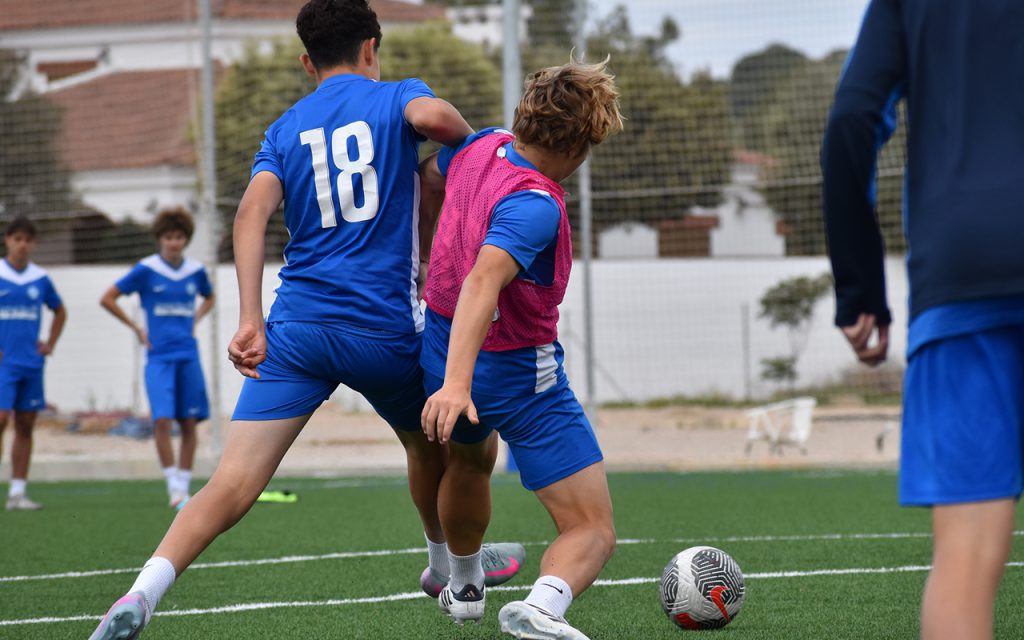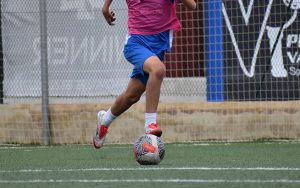To play in a high press system in soccer, you need more than just energy and aggression—you need intelligence, teamwork, and absolute commitment to the tactical structure. High pressing is about hunting the ball as a unit, suffocating opponents in their own half, and forcing them into mistakes they don’t have time to recover from.
While the concept might sound simple—pressure the ball high up the pitch—the execution is anything but. That’s why players training in high-performance environments, particularly in tactically intensive soccer camps that emphasize real-game strategy and off-ball coordination, gain an edge in how to press with purpose.
Let’s dive into what makes a high press work, what your role is within it, and how to become the kind of player that thrives in this intense system.
Table of Contents
- What Is a High Press System in Soccer?
- Key Characteristics of a High Press
- Pressing Triggers: When to Press
- Individual Responsibilities in a High Press
- Common High Press Formations
- Pressing Patterns and Traps
- How to Train for a High Press System
- Pros and Cons of the High Press
- Mentality: The Pressing Mindset
- Press with Purpose
What Is a High Press System in Soccer?
A high press is a defensive tactic where the team applies aggressive pressure high up the pitch, often in the opponent’s defensive third or midfield.
🎯 The goal? Win the ball back quickly and close to goal.
This tactic disrupts the opponent’s build-up, forces risky passes, and creates scoring opportunities through turnovers. It’s high-risk, high-reward football.
Key Characteristics of a High Press
To play effectively in this system, you need to understand its defining traits:
🔥 Intensity – Constant sprinting, quick reactions, and immediate pressure
🧠 Coordination – Every player knows where and when to press
⏱️ Timing – You don’t press randomly—you press on triggers
🚫 Compactness – Space between lines is minimal to limit passing options
It’s not about chasing the ball blindly. It’s about pressing with purpose.
Pressing Triggers: When to Press
The best pressing teams don’t always press—they press at the right moment. These moments are called “triggers,” and they include:
✅ Poor first touch by an opponent
✅ Back pass under pressure
✅ Ball played into a wide defender with no support
✅ Midfielder receiving while facing their own goal
✅ Long aerial ball without clear control
These cues signal the team to collapse forward together, cutting off passing lanes and forcing quick decisions.
Individual Responsibilities in a High Press
Let’s break down what each position is expected to do when playing in a high press system.
🔼 Forwards (Striker + Wingers)
Your job starts the press.
Responsibilities:
- Force play toward one side
- Cut off passing lanes to midfield
- Sprint to defenders the moment they hesitate
- Coordinate with each other to trap the ball
Key skills:
⚡ Acceleration
🧠 Vision and body positioning
🔁 Fitness for repeat efforts
🧠 Midfielders (Especially the #6)
Midfielders support the press and cut off central options.
Responsibilities:
- Step up to mark opposing midfielders tightly
- Anticipate second balls and intercept
- Maintain structure to prevent overexposure
- Stay in constant communication with back line
Key skills:
🎯 Tactical discipline
🔄 Quick transitions
👟 First-time passes after recoveries
🛡️ Defenders (Center-Backs + Full-Backs)
Defenders in a high press must be brave and compact.
Responsibilities:
- Hold a high line to keep pressure compact
- Track runners in behind
- Sweep up long balls or loose touches
- Communicate constantly with midfield
Key skills:
⚔️ 1v1 defending
🧱 Aerial dominance
🗣️ Vocal leadership
Common High Press Formations
Some formations naturally support a high press. These include:
- 4-3-3: Offers strong midfield presence and wide pressing wingers
- 4-2-3-1: The central attacking midfielder acts as the pressing trigger
- 3-4-3: Full-backs push into midfield, allowing for aggressive positioning
- 4-4-2 diamond: Central overload allows intense central pressure
What matters more than formation, though, is the collective execution.
Pressing Patterns and Traps
🕸️ Cutting the field in half: Directing play toward one sideline, then trapping the ball with 3-4 players
🧱 Blocking the pivot: Removing the central passing option to isolate wide players
🎯 Pressing from the weak side: Allowing a switch before collapsing with speed
🚨 Second-ball hunt: After forcing a long ball, the team collapses on the receiver
Each pattern has one goal: Force the opponent into a low-percentage play.
How to Train for a High Press System
To thrive in this system, you need to train both your body and brain for quick decisions and relentless effort.
🏃♂️ Physical Conditioning
- Sprint intervals (10–30m bursts)
- Agility drills with short recovery
- High-intensity rondos with rotation
🧠 Tactical Drills
- 5v5 pressing grids with locked zones
- Press + recover transition exercises
- Match scenarios where triggers are called in real time
📈 Mental Focus
- Reaction training
- Communication-focused drills
- Video analysis of pressing patterns
Great pressing players aren’t just fit—they’re mentally locked in every second.
Pros and Cons of the High Press
✅ Advantages:
- Win the ball closer to goal
- Disrupt possession-based teams
- Set the match tempo early
- Create panic and errors
❌ Risks:
- Leaves space behind the defense
- Requires extreme fitness and discipline
- Can fall apart if one player breaks structure
This system works only if everyone buys in. One player pressing alone is a recipe for disaster.
Mentality: The Pressing Mindset
To play in a high press system, your mindset must shift from “reactive” to relentless. You’re not waiting for the opponent to mess up—you’re forcing them to.
🔁 You sprint.
🧠 You scan.
🎙️ You shout.
⚡ You recover.
And then—you do it all again.
Pressing is a grind. But for the right player, it’s also an opportunity to dominate without even touching the ball.
Press with Purpose
To truly play in a high press system, you must combine physical intensity, tactical knowledge, and complete team trust. It’s not about wild pressure—it’s about orchestrated chaos that pushes opponents into decisions they don’t want to make.
Players who succeed in this system understand space, time, and triggers. They thrive under pressure—because they create it.
Now get ready. The whistle’s coming. First step. First sprint. First steal. 💥⚽🔁




